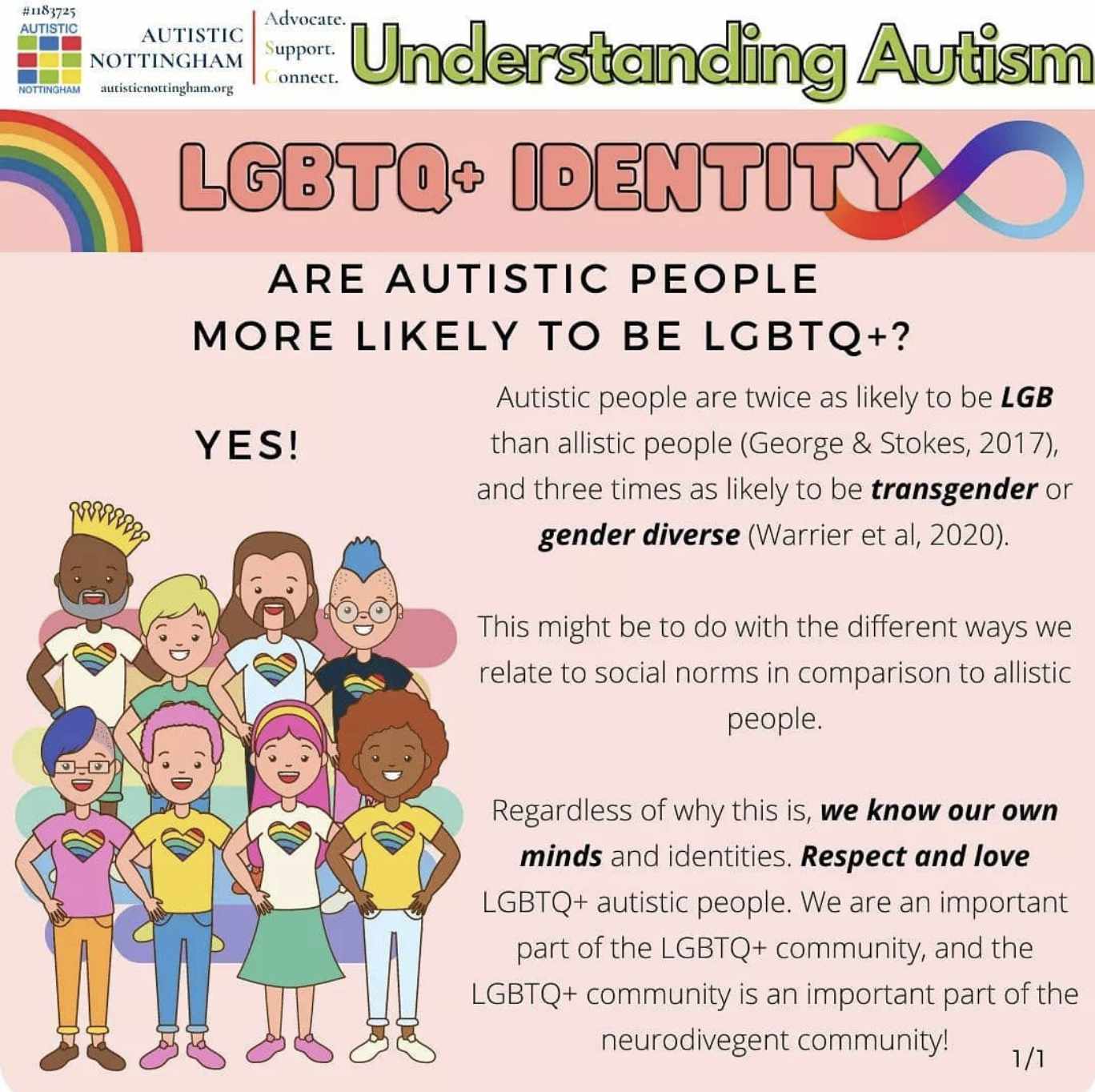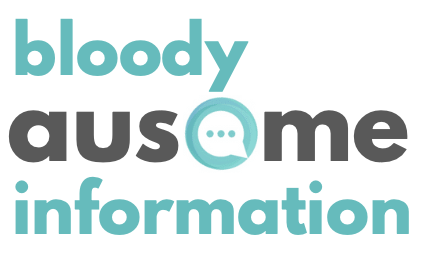Neurodiversity and Self-Identity
Individuals on the Autism Spectrum Are More Likely to Identify as LGBTIQA+
A number of studies have shown that Autistic people are significantly more likely than the general population to identify as lesbian, gay, bisexual, transgender, gender diverse or queer.

Source: @autisticnottingham, 'LGBTQ+ Identity'
Here are some research findings:
- Among Autistic individuals, an estimated 42–69% identify as same-sex attracted or a sexual minority (Byers et al., 2012; George & Stokes, 2018b)
- One study estimates that between 42-69% of Autistic individuals identify as same-sex attracted or as a sexual minority (LGBTQ+) (Byers et al., 2012; George & Stokes, 2018b).
- 15-35% of Autistic individuals who are identified as 'high-masking' reported a sexual minority identity (Pecora et al., 2016).
- Autistic women are more likely to be in a same-sex relationship, and all Autistic participants reported more same-sex attraction, more varied sexual identities, and more asexuality (DeWinter et al., 2017).
There is a great deal of diversity within the LGBTIQA+ communities and a wide range of terms and language related to:
- Sex
- Bodies
- Gender
- Sexuality
- Sexual attraction
- Experiences
- Legal and medical classifications (Fileborn, 2012; National LGBTI Health Alliance, 2013a).
Research in this subject is relatively new, so it’s too early to speculate on the possible reasons why there is this correlation. However, this research is important and will continue to ensure mental health professionals, educators, health care professionals and parents can both support this child/ren as well as establish appropriate ways to discuss gender, sexuality and related topics with their Autistic children.
Glossary Of LGBTIQA+ Terms
Sexual orientations
- Cisnormativity: assumes that everyone is cisgendered and that all people will continue to identify with the gender they were assigned at birth.
- Cisnormativity erases the existence of transgender/trans and gender diverse people.
- Heteronormativity: the view that heterosexual relationships are the only natural, normal and legitimate expressions of sexuality and relationships, and that other sexualities or gender identities are unnatural and a threat to society (GLHV, 2016).
- Heterosexism: describes a social system that privileges heteronormative beliefs, values and practices.
- Heterosexism provides the social backdrop for homophobic and transphobic prejudices, violence and discrimination against people with non-heteronormative sexualities and gender identities and intersex varieties (Fileborn, 2012; GLHV, 2016).
- Homonormativity: a term that describes the privileging of certain people or relationships within the queer community (usually cisgendered, white, gay men). This term also refers to the assumption that LGBTIQA+ people will conform to mainstream, heterosexual culture; for example, by adopting the idea that marriage and monogamy are natural and normal.
- Homophobia and biphobia: refer to negative beliefs, prejudices and stereotypes that exist about people who are not heterosexual.
- Misgendering: an occurrence where a person is described or addressed using language that does not match their gender identity (GLHV, 2016). This can include the incorrect use of pronouns (she/he/they), familial titles (father, sister, uncle) and, at times, other words that traditionally have gendered applications (pretty, handsome, etc.). It is best to ask a person, at a relevant moment, what words they like to use.
- Transphobia: refers to negative beliefs, prejudices and stereotypes that exist about transgender/trans and gender diverse people.
Source: https://aifs.gov.au/cfca/publications/lgbtiq-communities




